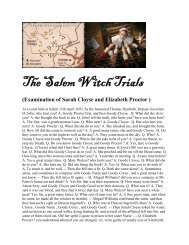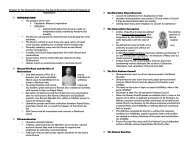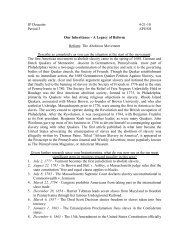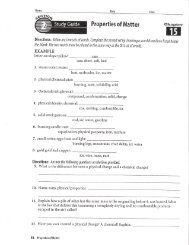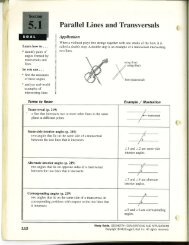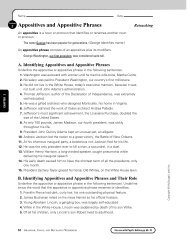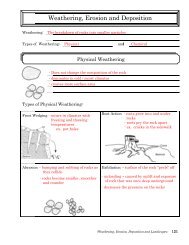Mexican Texans German Texans - Teacher
Mexican Texans German Texans - Teacher
Mexican Texans German Texans - Teacher
You also want an ePaper? Increase the reach of your titles
YUMPU automatically turns print PDFs into web optimized ePapers that Google loves.
settlers. Although some <strong>German</strong>s came to Texas seeking political or religious freedom, others arrived<br />
in search of economic opportunities. <strong>German</strong>s settled in New Braunfels and other communities to the<br />
north and west, including Fredericksburg.<br />
Other Immigrants from Europe<br />
The Irish and English were the second and third largest groups of Europeans to settle in Texas. In 1845<br />
many Irish fled their homeland because a disease attacked Ireland’s main food crop, the potato,<br />
causing a famine. By 1850 there were 1,403 Irish settlers in Texas. The number increased to 3,480 by<br />
1860. Many Irish immigrants settled around San Patricio and Refugio.<br />
Texas settlers came from almost every nation in Europe. Polish immigrants led by Father Leopold<br />
Moczygemba (moh•chee•GHEM•bah) settled in the town of Panna Maria in Karnes County. Ernst<br />
Bergman and Josef Lesikar led a large group of Czechs into Central Texas. Immigrants from Sweden,<br />
Norway, Italy, and the Netherlands also arrived in large numbers during the 1850s.<br />
Native <strong>Texans</strong><br />
President Lamar had forced most Native <strong>Texans</strong> out of East Texas during the years of the Republic.<br />
His policy was called the removal of the Native <strong>Texans</strong>. However, many Comanches and Kiowas still<br />
lived in the western part of the state. The growing population of Texas spread even farther west onto<br />
Native <strong>Texans</strong>’ hunting land. This loss of land increased tensions with native groups.<br />
Migration from the United States<br />
Most of the new <strong>Texans</strong> emigrated from the United States, mostly from the South. During the 1850s<br />
many immigrants came from Arkansas, Louisiana, Tennessee, and Alabama. These settlers generally<br />
moved directly to the frontier line. There they could farm as they had at their previous homes.<br />
Immigrants from Georgia and Mississippi usually settled in the pine belt of East Texas and cleared<br />
land for cotton crops. Louisianians settled mainly in the lower regions of rivers near the coast, where<br />
they grew sugar cane. People tended to settle in areas that were similar to their former homes.<br />
Slavery had existed in Texas for many years. African American slaves were brought to Texas by their<br />
owners during the colonial period despite some efforts by the <strong>Mexican</strong> government to free them. By<br />
1860 the slave population was growing faster than the free population. Even though most white people<br />
in Texas did not own slaves, they generally supported slavery. They claimed that slavery was needed<br />
to support the economy of the South. However, many groups in Texas, including <strong>German</strong> immigrants<br />
and Tejanos, opposed slavery. They argued that it was morally wrong for one person to own another<br />
person.<br />
Source: McDougal Littell, Celebrating Texas



